Deep in an Indian forest beside a tranquil lake, the RAAS Chhatrasagar creates its own magic. Designed by Studio Lotus, the property is a perfect place for people who understand that design can both enhance and complement the natural world.

December 9th, 2022
Situated within 800 acres of pristine forest aside the Chhatrasagar Lake, RAAS Chhatrasagar is a holiday destination that satisfies on every level. Once a tourist camp, open only in the cooler months from October to March, the new property now provides myriad facilities plus the experience of living in and with nature.
The project is designed by New Dehli firm, Studio Lotus, with Ambrish Arora as lead and his team. Together the team has created a veritable paradise for visitors that is both sensitive to place and sympathetic to the history of the site, finding that sweet spot, where nature and the man-made can co-exist and flourish.
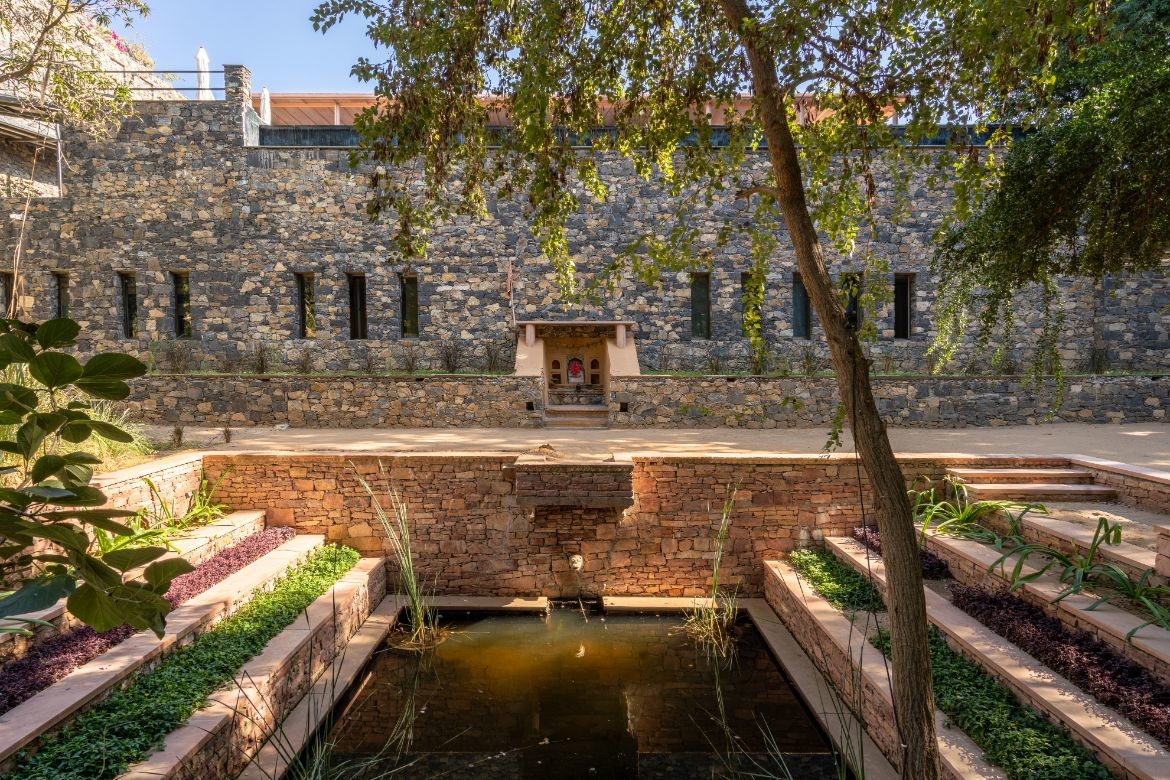
RAAS Chhatrasagar’s site of 1,858 square metres includes a 16-key hospitality property located in the town of Nimaj in Rajasthan’s Pali district in India. The area includes the Chhatrasagar Lake and a forest with a vast array of biodiversity of flora and fauna. Developed by RAAS (Raas Hotels), the original canvas-tented tourist destination has been dramatically updated, providing guests a year-round opportunity to visit.
The design brief was complex and entailed the development of a perennial hospitality property that would be resilient to the harsh summers and cold winters of the region. The existing capacity was to be increased to 16 tented units and there should be greater amenity for guests. All this was to be achieved with a minimal environmental footprint to retain the sensitive ecological context. To satisfy all requirements, Arora established a design concept of low-impact foundations and lightweight superstructures built almost entirely without cement, instead, employing a dry construction methodology using lime as a binder.
Related: Urban retreat for the discerning traveller: Marriott Hotel Docklands
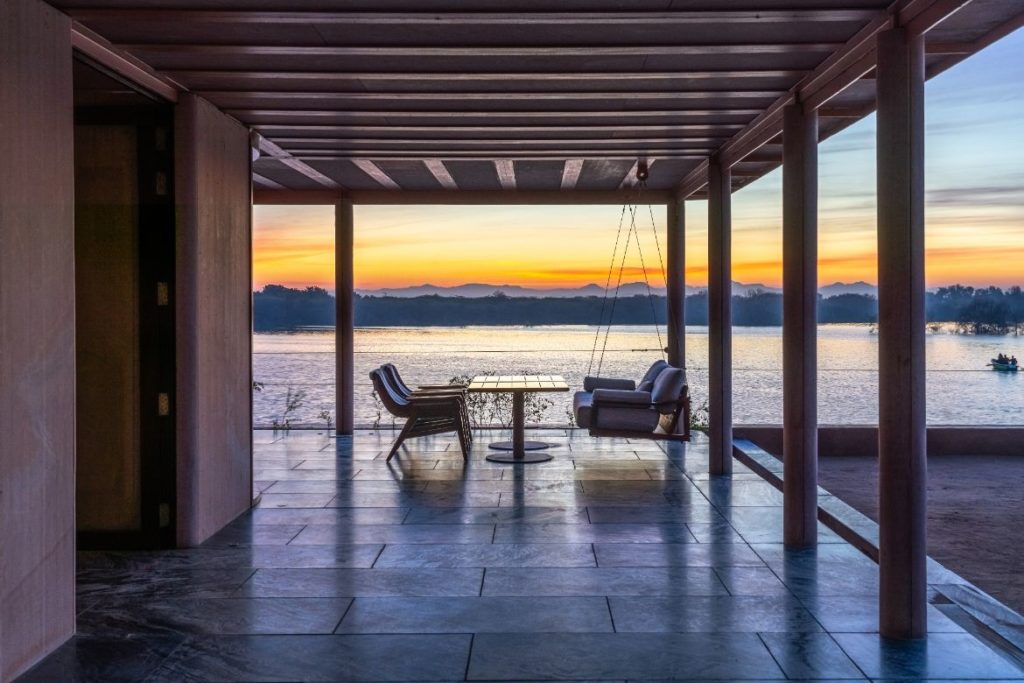
The property is revealed through layers of topography and the element of surprise. Visitors arrive at a drop off point then walk through a pathway flanked with orchards. Next, they climb a series of stepped stone plinths arriving at a courtyard that frames a view of the Chhatrasagar lake. It’s a grand destination area and becomes the heart of the property that unifies the public and private spaces.
The design of RAAS Chhatrasagar is a linear configuration positioned along the length of the lake and facilities in the single storey structure include a reception/bar and restaurant, an all-season infinity pool, the owners’ residence and back-of-house functions.

On the southern periphery the stilted tented guest pods have been placed side-by-side, each separated by metal screens with bamboo infill that extend towards the embankment. The pods are thermally and acoustically insulated with fibre cement board panels in the wall and roofing system and this in turn forms the shell of the building.
A continuous tensile fabric canopy stretches over lightweight partitions that span the entire structure and also provide water proofing and added insulation. This secondary membrane extends beyond the footprint of the pods to create shaded verandas overlooking the surrounding panorama. Retractable skylights installed within the roof capture the changing aspect of diurnal and nocturnal views of sky.
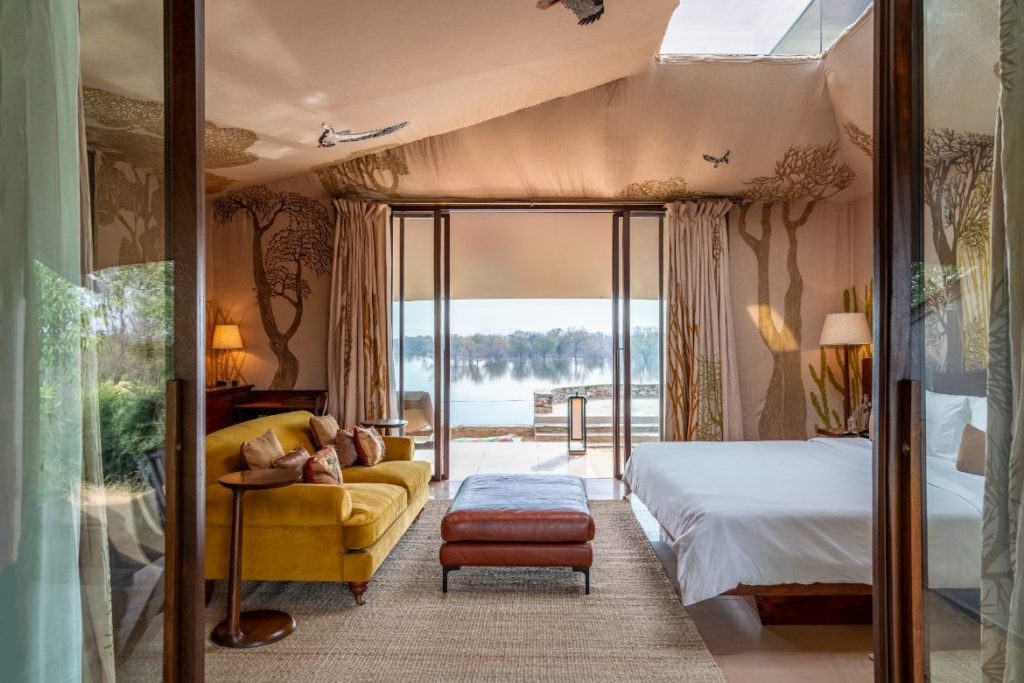
Inside, the pods are fabric lined and there are woodblock, screen and digital prints of indigenous bird and animal life as well as hand-embroidered fabrics by printmaker Dhvani Behl’s studio Flora For Fauna. The interiors feature a bedroom with study, en suite bathrooms with free-standing bathtub, a vanity, dry and wet areas and a walk-in robe. Bespoke furniture by Mangrove Collective completes the setting and provides luxurious comfort.
Another feature of note in the design of RAAS Chhatrasagar is the Baradari Restaurant, conceived as a contemporary expression of the Rajputana 12-pillared pavilion. The structure of the restaurant is made from a lightweight metal frame dry mounted with hand dressed stone infills and affords diners panoramic views of the lake and forest.
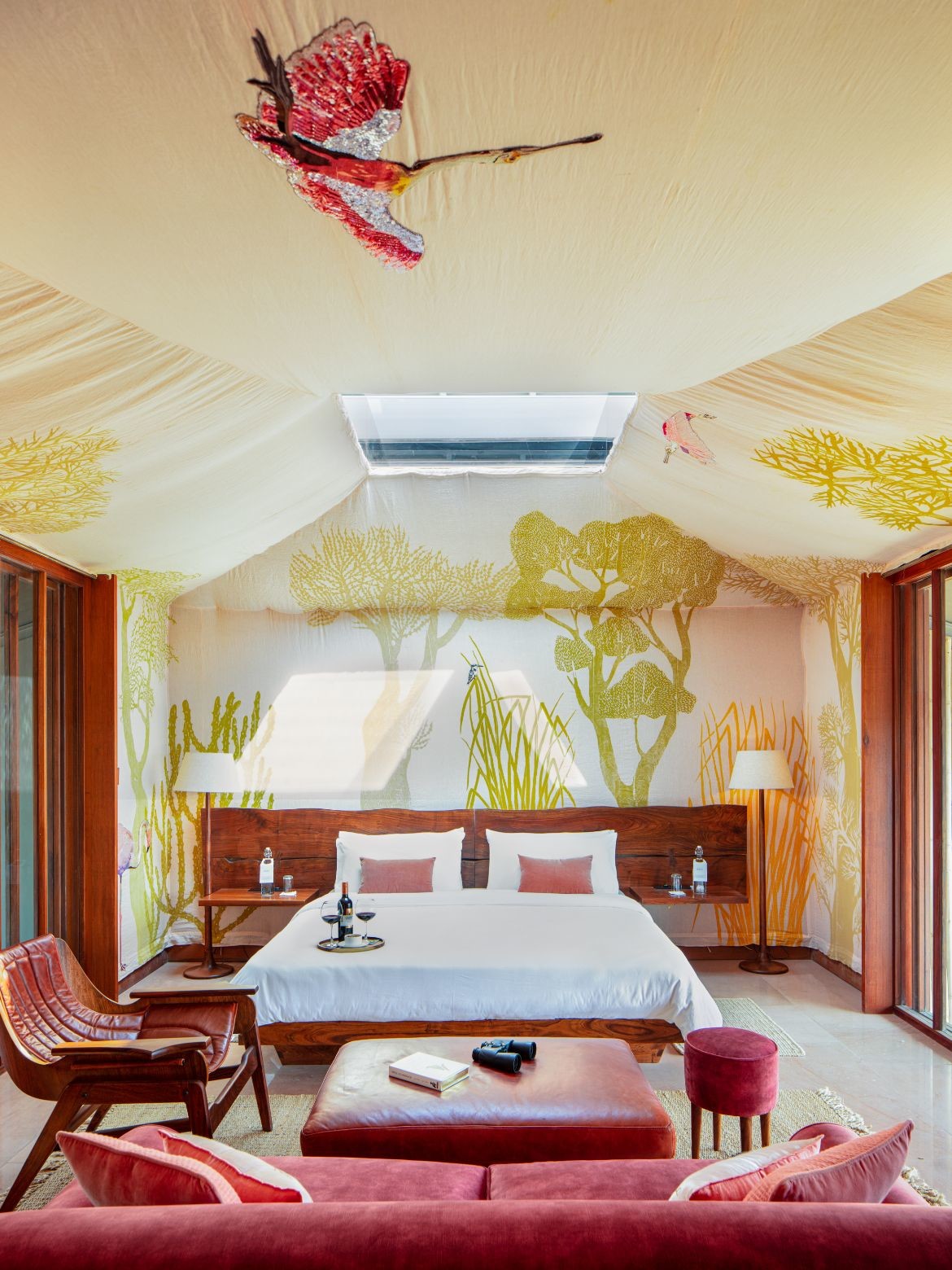
The interior presents a soft and restrained material palette of local Chitar stone and woodblock printed patterns that have been translated into stone panels. Upholstered furniture made from locally-sourced Acacia timber complements the stone and the bar counter becomes a focal point decorated with elaborate hand carved reliefs.
RAAS Chhatrasagar is certainly a place to be one with nature but also to relax and enjoy hospitality at its best. Studio Lotus’ design is a template for sensitive development with all the creature comforts. It’s a beautiful place to visit that captures the ideas of sustainability and longevity and that’s architecture and design at its best.
Studio Lotus
studiolotus.in
Photography
Studio Noughts & Crosses (Andre J. Fanthome); and Avesh Gaur



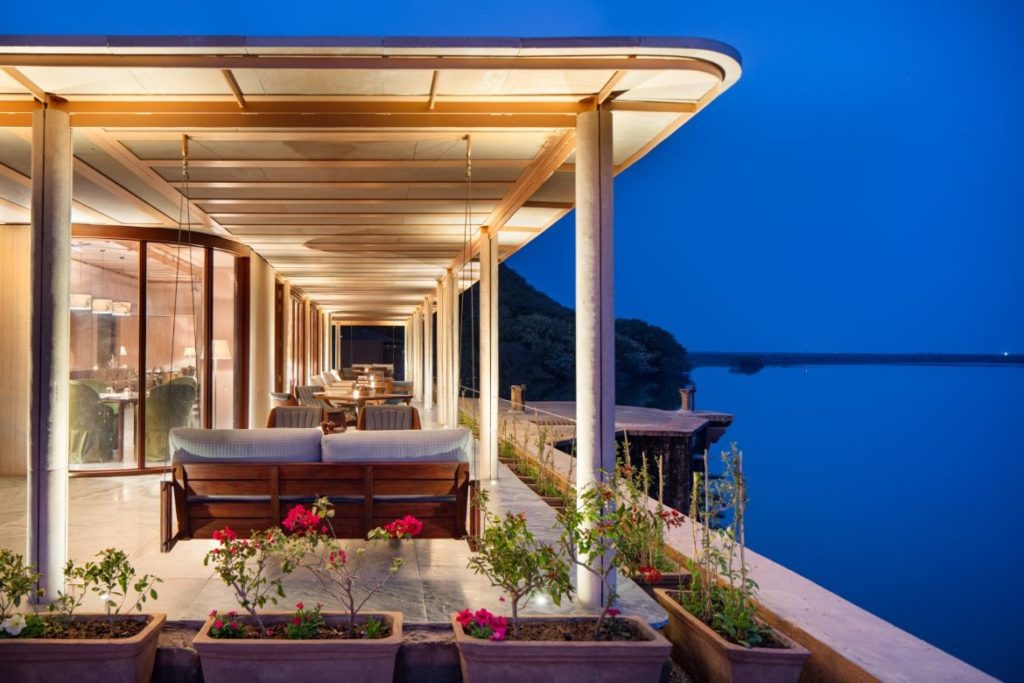


We think you might like this article about this hot pot restaurant by Hummingbird Design Consultants Design in China.
A searchable and comprehensive guide for specifying leading products and their suppliers
Keep up to date with the latest and greatest from our industry BFF's!

In this candid interview, the culinary mastermind behind Singapore’s Nouri and Appetite talks about food as an act of human connection that transcends borders and accolades, the crucial role of technology in preserving its unifying power, and finding a kindred spirit in Gaggenau’s reverence for tradition and relentless pursuit of innovation.

Elevate any space with statement lighting to illuminate and inspire.

The Man x Machine x Material collaboration by Jarrod Lim and The American Hardwood Export Council explores how generative AI can enhance design processes while also revealing the areas where human intuition remains irreplaceable.

Another Sydney project has taken out the top prize this year in Singapore, with a wide range of other winnings works from around the world.

From building selection to amenities, circulation and materiality, Carr’s fit-out for law firm Russell Kennedy is a comprehensive piece of workplace design.
The internet never sleeps! Here's the stuff you might have missed

As the previous winner of the Gaggenau Kitchen of the Year Design Contest, Eva-Marie Prineas of Studio Prineas knows a thing or two about designing an award-winning kitchen. Here, she shares her insights into what she’s keeping an eye on when it comes to showstopping kitchen design.

Innovation, beauty, and wellbeing collide in this new range of wellness-powered surfaces